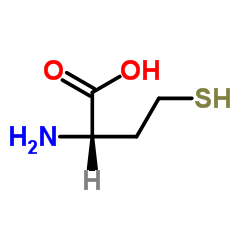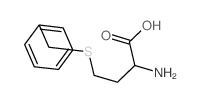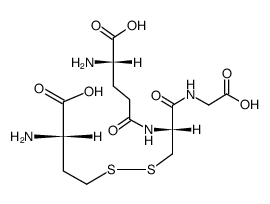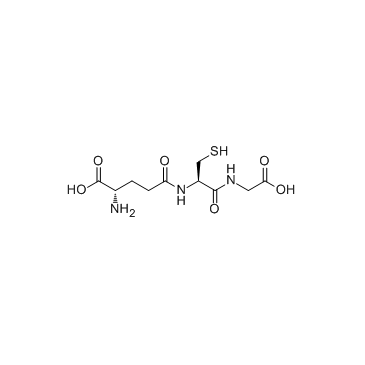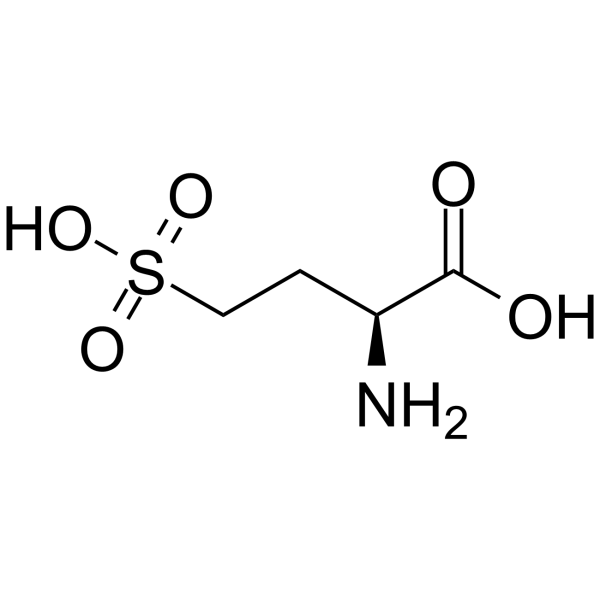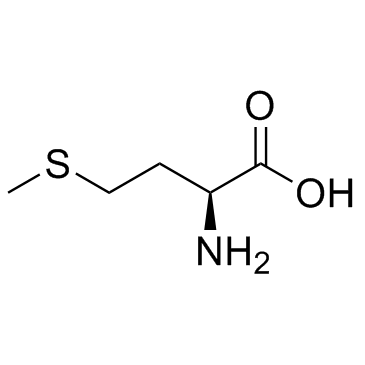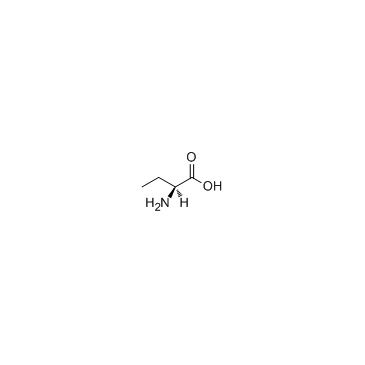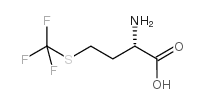626-72-2
| Name | L-Homocystine |
|---|---|
| Synonyms |
L-Homocystine
Dl-Homocycine (2S,2'S)-4,4'-Dithiobis(2-aminobutanoic acid) dl-homocystine crystalline HOMOCYSTINE,DL Butanoic acid, 4,4'-dithiobis[2-amino-, (2S,2'S)- QVYZ2SS2YZVQ &&L-L Form (2S,2'S)-4,4'-Disulfanediylbis(2-aminobutanoic acid) EINECS 210-962-5 H-DL-Hcys-OH)2 homocystine (2S,2'S)-4,4'-Dithiobis(2-aminobutyric acid) MFCD00020391 DL-Homocystine H-HoCys-OH (H-HoCys-OH)2 |
| Description | L-Homocystine is the oxidized member of the L-homocysteine. Homocysteine is a pro-thrombotic factor, vasodilation impairing agent, pro-inflammatory factor and endoplasmatic reticulum-stress inducer used to study cardiovascular disease mechanisms. |
|---|---|
| Related Catalog | |
| Target |
Human Endogenous Metabolite |
| In Vivo | A single or multiple doses of L-Homocystine administered to mice during organogenesis can aggravate the developmental disturbances caused by a single dose of VPA administered on GD 8. Whereas, VPA lowers significantly plasma FA and vitamin B12 concentrations, it has no direct impact on the homocysteine concentrations. Therefore, it is proposed that high levels of homocysteine disturb the FA, vitamin B12, and possibly methionine metabolism thus providing a favorable situation for VPA to interfere with the development of susceptible embryos[1]. |
| Animal Admin | Mice[1] Groups of mice are first injected on GD 8 with a single dose of 75 mg/kg of L-Homocystine or an equal volume of saline. One half of the L-Homocystine-treated animals then receive a single dose of 600 mg/kg of VPA ((H-HoCys-OH)2+VPA group), while the other half are injected with a proportionate volume of saline (L-Homocystine+saline group). In the other experiment, mice are treated with a daily dose of 75 mg/kg of L-Homocystine or a proportionate volume of saline starting from GD 5 and continue through GD 10. One half of the L-Homocystine-treated animals also have a single exposure to 600 mg/kg of VPA (L-Homocystine+VPA group) or a proportionate volume of saline (L-Homocystine+saline group) on GD 8. The total volume of fluid injected corresponded to the body weight and does not exceed 0.45 mL[1]. |
| References |
| Density | 1.4±0.1 g/cm3 |
|---|---|
| Boiling Point | 507.6±50.0 °C at 760 mmHg |
| Melting Point | 281-284ºC (dec.) |
| Molecular Formula | C8H16N2O4S2 |
| Molecular Weight | 268.354 |
| Flash Point | 260.8±30.1 °C |
| Exact Mass | 268.055145 |
| PSA | 177.24000 |
| LogP | 1.03 |
| Vapour Pressure | 0.0±2.8 mmHg at 25°C |
| Index of Refraction | 1.619 |
| Storage condition | 2~8°C |
| Personal Protective Equipment | Eyeshields;Gloves;type N95 (US);type P1 (EN143) respirator filter |
|---|---|
| Safety Phrases | 22-24/25 |
| RIDADR | NONH for all modes of transport |
| WGK Germany | 3 |
|
~94% 
626-72-2 |
| Literature: Miyazaki, Hideya; Ohta, Atsushi; Kawakatsu, Nobuyuki; Waki, Yukitaka; Gogun, Yasuhiro; et al. Bulletin of the Chemical Society of Japan, 1993 , vol. 66, # 2 p. 536 - 540 |
|
~% 
626-72-2 |
| Literature: Biochemical Preparations, , vol. 5, p. 96 Journal of Biological Chemistry, , vol. 109, p. 97,101 |
|
~% 
626-72-2 |
| Literature: Journal of Organic Chemistry, , vol. 57, # 1 p. 123 - 127 |
|
~% 
626-72-2 |
| Literature: Journal of the Chemical Society, Perkin Transactions 2: Physical Organic Chemistry (1972-1999), , # 4 p. 741 - 746 |
| Precursor 4 | |
|---|---|
| DownStream 10 | |

